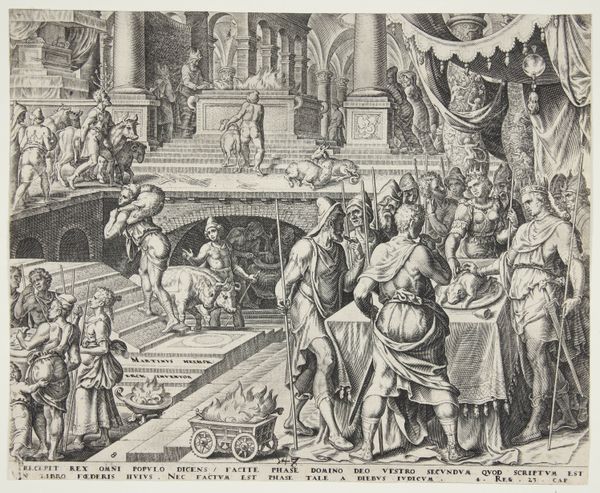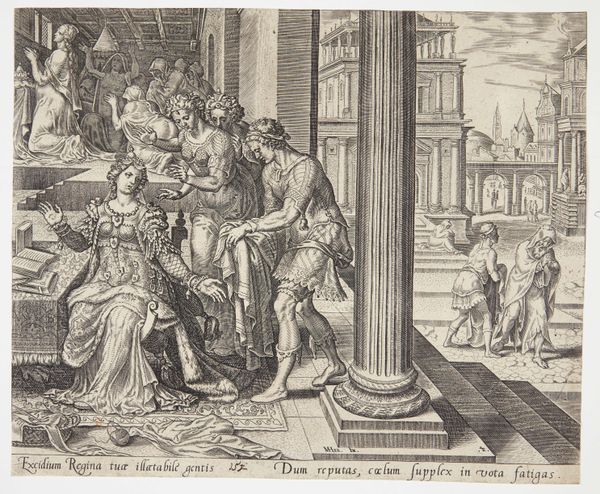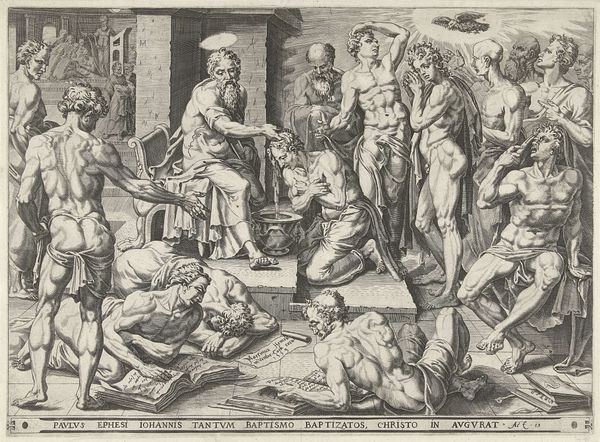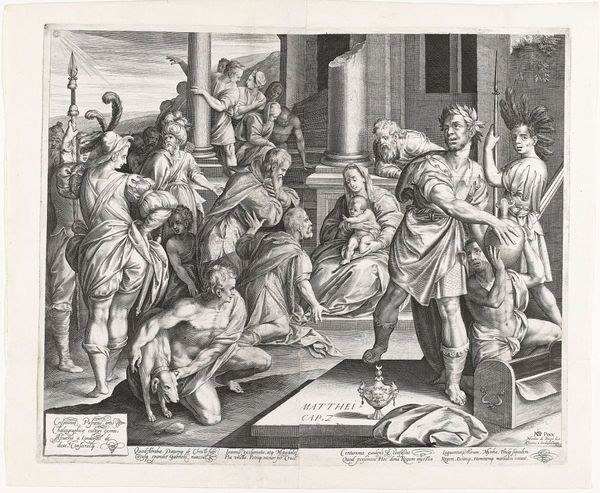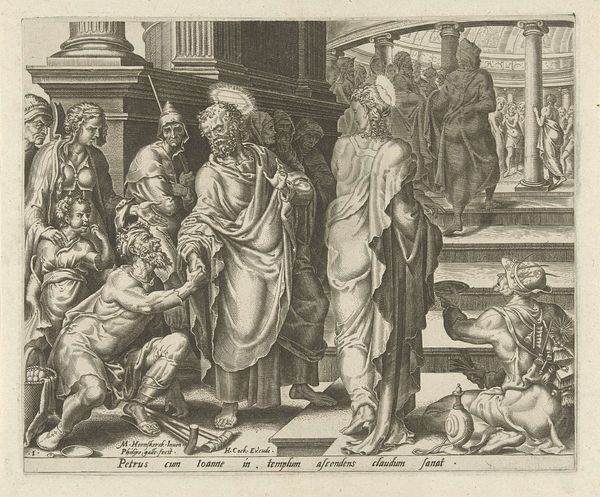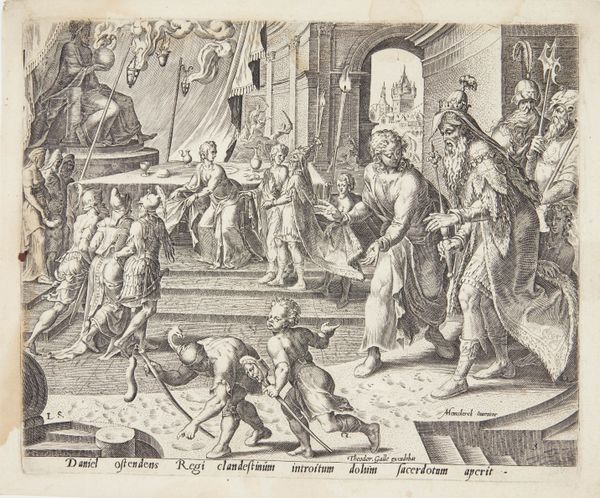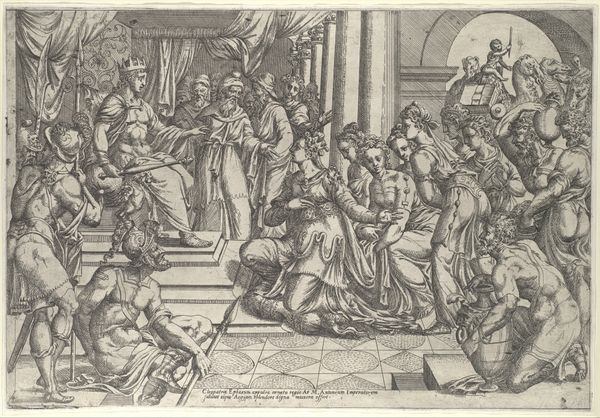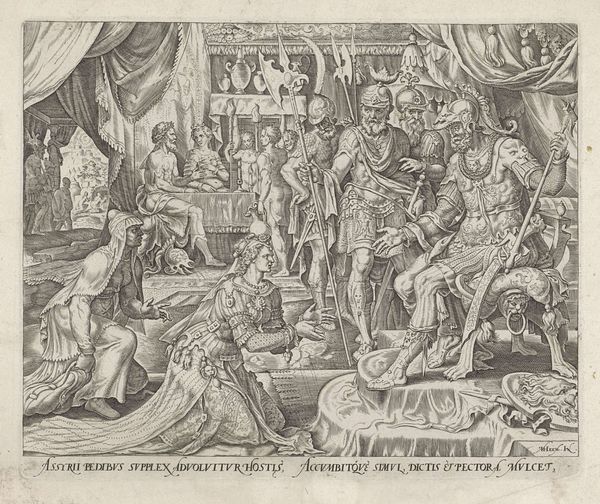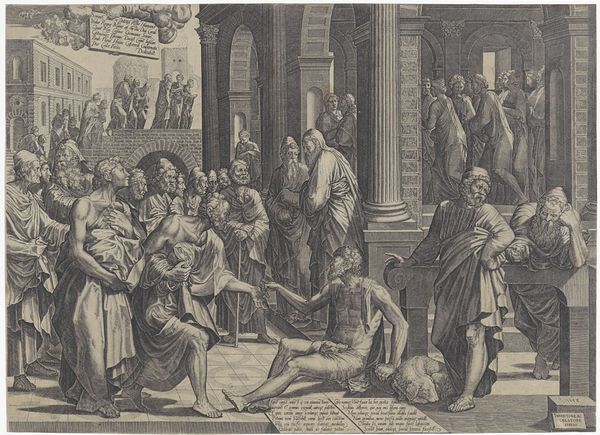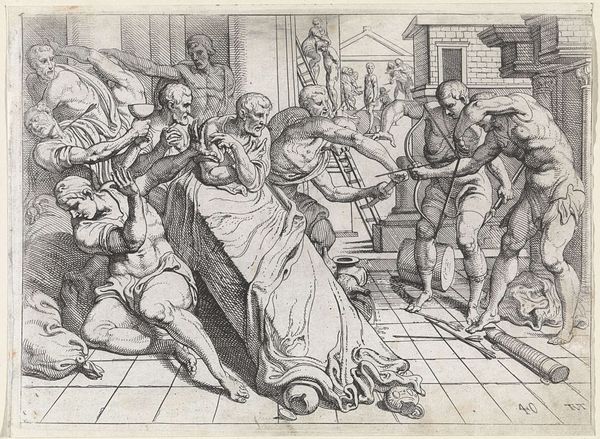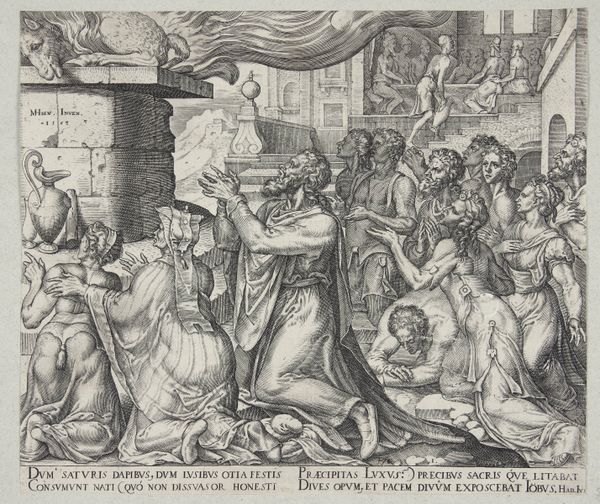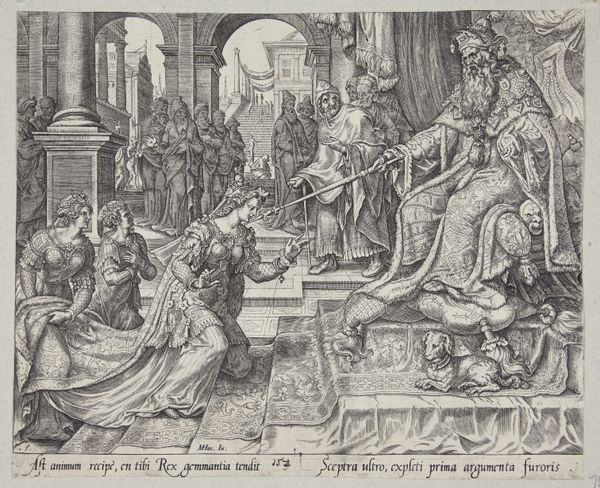
print, engraving
#
narrative-art
# print
#
figuration
#
11_renaissance
#
history-painting
#
northern-renaissance
#
engraving
Dimensions: 202 mm (height) x 246 mm (width) (monteringsmaal), 205 mm (height) x 247 mm (width) (bladmaal)
Philips Galle made this engraving, Tamar preparing food for Amnon, in the late 16th century. It depicts a biblical scene, yet its style reflects the social norms of Galle's time. Consider the setting: a lavish interior, richly dressed figures, and detailed ornamentation. These elements speak to the values of the elite class in the Netherlands during the late Renaissance. Galle was a printmaker who worked for wealthy patrons. His art served the tastes of that class, reinforcing their status and cultural values. The scene is filled with details on furniture, clothing, and the very architecture of the domestic sphere. This domestic scene is given a certain drama through the composition but also through the use of perspective, which pulls the viewer into the domestic space, implicating the viewer as a kind of voyeur. To understand Galle's work, we can delve into Dutch history, the patronage system, and the cultural meanings of domestic imagery. The museum itself can be seen as one of these institutions that shapes how we see and interpret this artwork today. By researching these contexts, we reveal the complex interplay between art, power, and society.
Comments
No comments
Be the first to comment and join the conversation on the ultimate creative platform.
